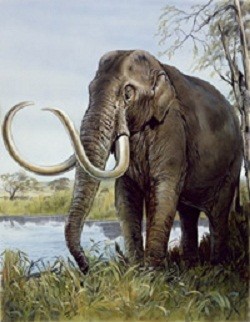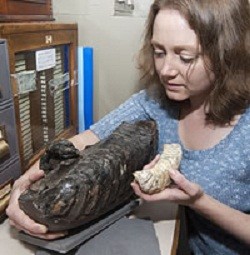World's Smallest Woolly Mammoth Discovered In Crete [VIDEO and PHOTOS]
Scientists from the Natural History Museum have discovered fossils of a dwarf-sized woolly mammoth in Cape Malekas, Crete.
The study reveals that the mammoth weighed around 300kg, half the weight of the previous known smallest dwarf mammoth M lamarmorai; it is just around one metre tall, about the size of a modern baby African or Asian elephant.
Scientists, who had discovered this fossil in 1904, believed earlier that the mammoth belonged to the extinct straight-tusked elephant, Palaeoloxodon antiques. This was because it was the ancestor of nearly all other extinct dwarf elephants found on various Mediterranean islands including Sicily, Malta and Cyprus. But after re-examining the fossil, scientists found that it belonged to the mammoth group.
They discovered this by analysing the enamel "rings" found in the dwarf mammoth tooth fossil.
"Our work has meant that we cannot only show it is a mammoth, but also demonstrate it is the smallest mammoth known to have existed," said Dr Victoria Herridge, scientist at the Natural History Museum, in a statement.
"The enamel rings on the Cretan tooth fossil had three character features that resembled mammoths, the genus Mammuthus, and, importantly, not the straight-tusked elephant Palaeoloxodon," said Herridge.
"Once we had identified it as a mammoth, we used tooth shape to help us work out which species of mammoth it was most like," she said.
They compared the Cretan specimen to a species of elephant known to have lived on mainland Europe in the past; the three mammoth species were Mammuthus rumanus, Mammuthus meridionalis and Mammuthus creticus.
Scientists found that new fossils of the Cretan dwarf mammoth belonged to the species Mammuthus creticus.
Scientists also found as to why these species were small compared to other mammoth species. They found that Mammuthus creticus were living on an isolated island, the probable reason behind dwarfism.
According to Drawin's Island Rule, a short or small animal such as mouse tends to become large or huge in size when they live on an isolated island. Similarly, larger animals like elephants or giraffes become smaller when they live in such places.
Earlier, scientists were not aware that this rule applied to mammoths. They were shocked to find that a huge mammoth could also become short when they lived alone on an island.
"This is the first time that extreme island dwarfism has been shown to have occurred in mammoths," said Herridge.
"By showing that the Cretan dwarf descended from mammoths, we illustrate an example of parallel evolution - two quite distinct lineages of elephant dwarfed in similar fashion on different islands," said Dr Adrian Lister, scientist at the Natural History Museum, in a statement.
"This also emphasises that there is something about island habitats that causes elephants in general (as well as other kinds of large mammal) to dwarf," he added.
Scientists believe further research needs to done to know more about the Mammuthus creticus species.
Watch the video:



© Copyright IBTimes 2025. All rights reserved.




















